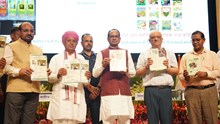
The controversy over whether primitive humans were vegetarians, non-vegetarians, or flexitarian remains unproven. It is an indisputable fact that the majority of modern humans are non-vegetarians or flexitarians. Raising animals for human consumption has become a major agriculture activity , meat and egg sales have become a major industry too. Livestock provide the world with billions of dollars worth of business, including animal feed, vet medicine and treatment for environmental problems caused by animal husbandry. Let us now examine each of these.
Vegetarians in the world
There are only about 375 million vegetarians on earth. Of these, 31% are Indians. Most vegetarians in India believe in the doctrine of non-violence as taught by Hinduism, Buddhism and Jainism. In the United States, 4% of men and 7% of women are vegetarians. In Europe it is only 10% of the total population. The smallest community of vegetarians in Europe and the United States are those who do not like to kill animals for meat and are aware of the environmental damage caused by livestock. According to the World Wildlife Fund (WWF), 15,500 litres of water is needed to produce one kilogram of beef. It should be noted that 70% of the world's fresh water is used to cultivate grains to feed the livestock.
Disadvantages of eating meat
Regular consumption of meat has been shown to cause cancer. Scientific experiments have also shown that high levels of protein in meat can damage the kidneys. Meat also increases the amount of fat in the blood and causes heart disease. The only advantage is that meat provides more of the iron needed to avoid anaemia. But this problem can be solved by eating a good amount of legumes.
Countries that are completely non-veg
Most of the countries in the world are completely non-veg. There are some countries where vegetarians will be in trouble. The main ones are France, Argentina, Japan, Spain, Cuba, Philippines, China, Mongolia, Portugal and Denmark.
Number of livestock
There are 3.5 billion livestock worldwide. Chicken is estimated to be in tens of billions. India alone produces 5.3 million tonnes of meat a year. With a production of 75 billion eggs, we are the third largest egg producer in the world. India is the fourth largest producer of chicken and the second largest exporter of beef in the world. We have 192.49 million cattle, including 145.12 million cows. Most of these are nurtured through animal farming. These creatures are considered to be machines that produce eggs, milk and meat. By avoiding free movement , giving antibodies to prevent diseases and hormones to achieve maximum growth in a short period of time, owners treat the animals mercilessly. It is common to provide oxytocin to produce maximum milk , and kill the babies for financial gain. The practice of selling meat from even diseased animals is not uncommon.
If meat is avoided
By avoiding or minimizing meat completely, we were protecting not only our own health but also the health of our mother earth. It has been found that the amount of greenhouse gases produced by a family of four in the United States when preparing a daily meal of meat is higher than that produced by two vehicles on the road a day. Yet we blame vehicles for the greenhouse gas emissions. If everyone on earth became vegetarians, the amount of greenhouse gases could be reduced by 70%. Even if meat is used in a moderate way, it can ensure a proportionate reduction in greenhouse gas emissions. Currently, air pollution, land and water degradation, loss of biodiversity and deforestation are all caused by animal farming.
Agriculture and Animal Husbandry
About 68% of the world's 12 billion acres of farmland are used to feed livestock. If eating meat could be avoided, 80% of this land can be converted as grasslands and forests. This will lead to massive absorption of carbon. If the remaining 20% is used for agriculture, the present poverty can be eliminated. Studies show that it can reduce the risk of death of the poor by 6% to 10%. That means it could feed 3.5 billion people more. It is a known fact that 5 kg of grains is needed for making 1 kg of chicken, 9 kg grains for 1 Kg pork and 25 kg of grain for 1 kg of beef .
Climate change and greenhouse gases
The world is heading for a major crisis. The temperature rises every year. The ice sheets are melting massively. The weather is changing and new diseases are on the rise. These are all indicators of climate change. Green house gases, such as carbon dioxide, methane, nitrous oxide, and chlorofluoro carbons, cause global warming. Animal husbandry, deforestation and overuse of fossil fuels contribute to the production of these gases that cause global warming. About 40% of methane is produced by farm animals. Fertilizers contribute to nitrous oxide, which is 300 times more harmful than carbon dioxide. One acre of forest land in the world is being changed for cattle farming every 2 seconds. That is 43,200 acres a day. In one year, it will cover 70,000 square kilometers. These figures are alarming.
Diseases and livestock
About 60% of the pathogens that threaten humans are transmitted through animals. Highly contagious E.coli increases due to poor sanitation and waste management. Hormone and antibiotics given to animals play a major role in increase of lifestyle diseases. Proponents of vegetarianism claim that vegetarianism can alleviate many of the problems that nature, humans, and other living things face. It's scientific basis cannot be ruled out.
















